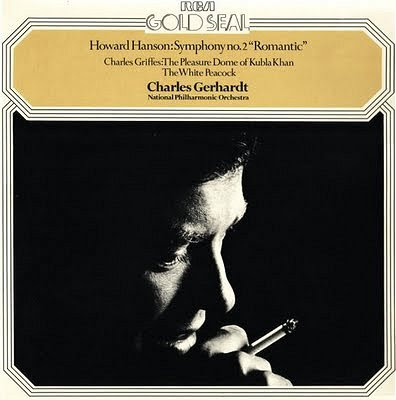When the audience changes, classical music must change
Classical music has reached a crucial tipping point. Since Edison invented the phonograph in 1877 concert hall performances have been the reference sound against which recordings are judged. But recent fundamental changes in listening habits - mobile devices, streaming, Bluetooth, quality earbuds, etc - mean that recordings are now the reference sound against which most listeners judge concert hall performances. And the refusal of the classical industry to acknowledge that far-reaching change is undermining attempts to connect with a wider new audience.
This year we celebrate the Beethoven anniversary. In a 2014 New Yorker article Alex Ross described how Beethoven was "a phenomenon of dazzling and disconcerting force" and how due to his impact "listening underwent a fundamental change". It is incontestable that new technologies have arrived with disconcerting force, and that there have been axiomatic changes in listening habits. But where in today's classical music are those dazzling forces of innovation? How can there be fundamental changes in listening when the demand from the classical cognoscenti is for established reperoire played in acoustically-perfect concert halls conforming strictly to 18th century sonic conventions, and for new music that is really new old music? Classical music should be pushing the creative envelope. But in recent years it has become more about licking the envelope containing the approved next big thing.
Seven years ago I wrote about a new recording by the contemporary Catalan composer Ramón Humet. My piece was one of the few, if not the only, English language article drawing attention to this important emerging composer and to the new adventurous Spanish label Neu Records that made the recording. But in an otherwise positive article I questioned the wisdom of Neu offering an optional FLAC 5.1 download locating the listener in the middle of the musicians. At the time my view was that recordings should be accurate reproductions of concert hall performances, and the audience does not sit in the middle of the musicians in a concert. But I readily admit that my view has now changed dramatically. Because technology and audiences have changed dramatically. Listeners today do not want museums of sound, they want new experiences in sound - which is exactly what Beethoven gave his audiences.
Since 2013 Neu records has continued to put their music where their mouth is, and have followed up the Ramón Humet release with discs of music by, among others, Bernat Vivancos and Morton Feldman, all with hi-res and surround sound options. Their latest release titled 'Images of Broken Light' features music by the contemporary Catalan composer Josep Maria Guix who was taught and praised by Jonathan Harvey. The ensemble compositions are played by the London Sinfonietta conducted by Geoffrey Patterson, and there are chamber works for violin, cello and piano. 'Images of Broken Light' comes beautifully package with a standard 44.1 kHz 16-bit CD, an erudite sleeve essay by Ramón Humet, and a code for downloading HD FLAC, HD ALAC – Stereo and Surround 5.1 – 24 bit 96 kHz formats, see header image. Josep Maria Guix's preoccupation with the tersely enigmatic haiku form means his music is ideally suited to Neu's exemplary production values. As I have come to expect from the Spanish label, the music and technical execution are superb, and this time I will not complain about the surround mixes.
Neu Records's driving force Santi Barguñó was ahead of the curve with his surround sound and hi-res experiments in 2013 and I was behind the curve. The ubiquitous impact of digital technologies means that classical audiences have changed, and as Aaron Copland told us 'When the audience changes, the music changes'. But how can the music change when it is trapped in stringently curated museums of sound? Observations by well-qualified people that "Beethoven would be making electronic music today" and "If Beethoven lived today, he would perhaps he would have been found next to a DJ... he was an avant-gardist and modernist who experimented and tried things" have been studiously ignored by the classical great and good. In the established repertoire the score may be sacred, but the sound is not. New audiences want their music up close and personal, but instead they are given a sonic experience defined by 18th century conventions. Digital technologies present infinite experimental possibilities for sound shaping and immersive sonics. Wagner shaped the sound in his Bayreuth Festpielhaus with the Schalldeckel, a wood and leather diffusing hood over the orchestra pit. Where in a Beethoven score does it stipulate the acoustic in which the music must be played? Where are today's experimenters?
Claude Debussy famously declared that music is the silence between the notes; but with new technologies music can also be the space around the notes. In their artistic manifesto Neu Records describe how "21st century composers are in a unique situation, with an inexhaustible range of technical resources, highly refined musical languages, the aesthetic perspective gained from the cutting edge of the twentieth century, and technological developments that multiply exponentially the ways listeners can access music". I would extend that and say the 21st century classical industry is in a unique situation, with an inexhaustible range of technical resources available to connect it to an audience dramatically rewired by new technologies. What a crying shame that classical music remains in denial about this unique opportunity.
'Images of Broken Light' was a requested review sample. New Overgrown Path posts are available via RSS/email by entering your email address in the right-hand sidebar. Any copyrighted material is included for critical analysis, and will be removed at the request of copyright owner(s).










Comments
Josep Maria Guix